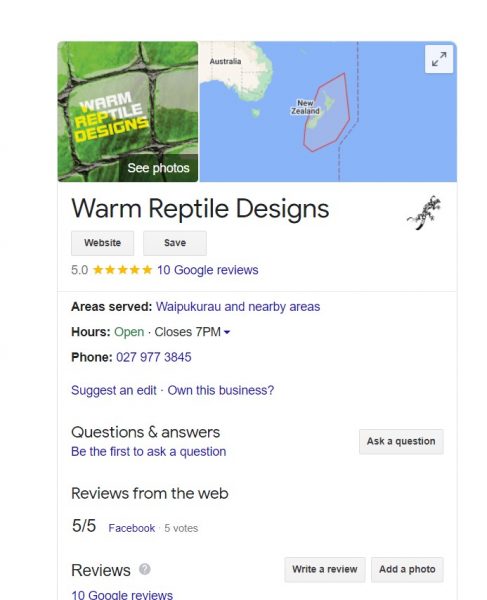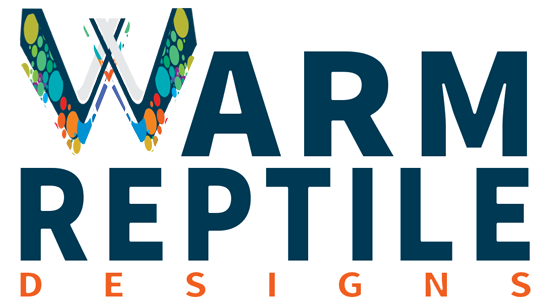
If you’re looking for a web designer to build your site, how do you know what to look for and where do you start?
We’ve come across some doozies in our time when we’ve helped clients “clean up” their existing site or migrated them away from another designer for various reasons. Here’s what we found and in hindsight, what we would have wanted our clients to know when they started to seek out a web designer.
We also get that it’s hard to know what to ask for or understand the intricacies of a website when you know nothing about them. But we also know that you shouldn’t be afraid to ask questions and get answers you can understand. Don’t just let things go over your head, especially when it comes to paying for them!
1. Look for reviews & get referrals
We think one of the first things to do once you’ve narrowed down who you think you want to work with is to google the design company’s name and see what comes up. If you do this search through Google Chrome browser, use the company name in your search query. If they have a Google My Business listing, there should be reviews on there for them. If not, you may want to move on at this point. If so, see what the reviews say. It can be hard to find reviews of design companies anywhere else. It will look like ours:

You’ll most likely see clients they’ve worked with in the past who may still be clients of theirs today. If the businesses are easily identifiable, you could look them up and reach out to them asking for their opinion. Take a look at their website as well and see how it looks and how user friendly it is. You should also see at the bottom of the homepage, a link to whoever designed it (is it the same one they left a review for?).
Don’t depend on the designer to provide you with a list of referrals and instead, do some due diligence yourself. The search engine is a powerful thing!
You could also narrow down a designer by asking someone you know who has a website if they are pleased with theirs. Always look at websites they have designed. Are they easy to navigate? Do they clearly state what the business does and offers? Is the contact form working? Are there typos anywhere? Do the pages go to where they should from the menu? Are the photos clear and relevant?

2. Read the fine print in their Terms page & contract
We recently came across a designer’s website and visited their Terms page (which should be a link at the bottom of the homepage). They went into detail about how you’ll be forced to use their hosting unless you state otherwise. They also talked about late fees incurred on any invoices you didn’t pay on time. They also stated you’d have to give them 15 days written notice on any changes.
Not everyone will state things like this on their website Terms & Conditions…but you’ll definitely find them in a contract you’re going to sign if you hire them.
Know what you’re getting into by starting with their legal documents and ALWAYS read your contract carefully. Like software agreements that we typically just skip and click on “Accept,” don’t let that happen when you hire a web designer. Understand what you’re getting into and what will be expected of you and make any changes in writing you don’t agree with or want modified.
We feel it’s the client’s option to have an “out” as well, so feel free to discuss some situations where if the designer isn’t performing their duties that you can opt out without additional fees or whatever they’ve put in their contract to you. They tend to cover themselves, but you’re half of this deal, too.
3. Reach out to them via their contact form
Oh, this is our favorite! See what the response time is when you ask for information via their contact form. You’ll also find out if it even works! We believe that if they don’t get back to you with a few hours or a minimum, 24 hours, you can find someone else. Of course we’ll assume you’ve written in the morning on a weekday.
You’ll want fast service when there’s a problem on your website. Will you be able to get a hold of them after hours or on the weekend? If so, do they charge more for doing work at this time? Or will your email and voicemail simply stay on hold until Monday? These are questions you’ll want answers to and even have in your contract if it’s imperative that your website stay up and running (and error-free) at all times.
4. Talk to them on the phone or in person
Trust your gut instinct and reach out to them by voice. How do you feel about the conversation? Do you seem to gel with them or is something telling you to RUN? Are they trying to sell you right away or are they interested in your business and what you’re looking to accomplish?
Although sometimes this isn’t always a tell tale sign of the service you’re going to receive, it can weed out the ones you don’t get a good feeling about.

5. Find out what you’re going to be billed for
Once you’ve found a designer and you start discussing requirements for the website, find out what type of recurring bills you should be expecting (and why).
We recently found that a client had a lot of paid plugins installed for no good reason except to pad the pocket of the designer down the road. Most of the time, a free plugin will do unless it’s something very specific. Be sure to mention that you don’t want any surprises after the fact because it will take more time to find a replacement and possibly cause you downtime on the website.
You should be expected to pay for your domain name at least once a year and hosting for the site. We’ve also found that designers like to charge a whole lot more for hosting than you could be paying yourself. That’s another option before getting started…find out who a good hosting provider is (another challenge) and pay for it yourself then give access to the designer.
You should ALWAYS have access to your domain name and hosting provider and you should be the one paying for it, not the designer. This is the most important takeaway when having a site built for you!
While we understand that some designers like to make money off of things like hosting and plugins, at Warm Reptile Designs, we’re more concerned with saving our clients money wherever we can. We don’t upcharge for things like that and our clients appreciate it.
We’d also suggest finding out how they round up their time on invoices (if at all). Some round to the nearest hour or half hour/quarter hour and some, down to the minute. This certainly factors into your monthly bill.
6. Updates happen
Who will be looking after the site once it’s built? Most likely the designer will, so know how long that should take per month and how much you’ll be billed (approximately). Undertaking this chore yourself without knowing anything about it won’t come easy. Will there be downtime? Yep. Will they be testing the updates after they’re finished? You should hope so!
You should probably check to be sure this is being done, as well. You should have a login to your website’s admin panel. Assuming it’s WordPress, it will tell you what sort of updates are needed. If that number keeps increasing or if you see one that says “WordPress needs to be updated” and it hasn’t been done in a few days (or worse, a few months), that’s a red flag. Same for your theme and plugins.
Here at Warm Reptile Designs, we believe in doing these within a matter of hours or days depending on what was patched and which update it is. However, we’ve seen sites go unpatched for MONTHS which is unacceptable. This leaves you open to hacking, a tarnished reputation and a downed website.
If you find yourself in this predicament, talk to your designer and find out why it hasn’t been done. Set some expectations about how long updates take to do (this should be done at contract signing time, even if you have to get them to put it in there) .
7. Local or out of town
We’ve found that having a client that’s close to where you live or do business is beneficial. This particularly comes in handy if you need training on the site, need IT help or need to take photos of products to put on the website.
Of course, if you live in a small town, it may not be easy to find someone who meets all of the criteria that is important. But even if they’re an hour away, it’s still better than being 8 hours away!
You may find more people who know about the designer and can get their thoughts on them if you go local.
If in-person meetings aren’t that important, you can always turn to online meetings and screen sharing to accomplish what you need.
8. How long have they been in business
We came across an interesting tidbit about a designer who was actually hiring out the design work to someone in another country! Yet they were taking credit for the work and never once mentioned it to the client. Yikes! They were also charging at least $100/hr while paying the designer much less.
Look for a LinkedIn page with their credentials or ask for their CV or resume to find out just how long they’ve been at this type of work. It appears that many still want the easy way out even if they do know how to do it. We’re not down with that type of designer. It’s morally unacceptable to keep information like that hidden and unfortunately, you’ll probably never know unless they keep in close contact with you and make changes on the fly when you ask for them.
They should be asking you to review their work as the site is being built and you could even be with them during meetings where they can do this in front of you.
We can tell you that it takes years to fully understand the process and all of the intricacies of learning a platform such as WordPress. Not to mention chasing down plugin authors and reporting problems, tweaking themes to suit your style, editing files on the server, dealing with back end hosting platforms and much, MUCH more.
Warm Reptile Designs started building websites with a program called Front Page in the late 90’s and then went on to use Dreamweaver and finally WordPress around 2008.
We wouldn’t necessarily trust someone who’s only been at it a year or two, for what it’s worth.

9. Rates mean (practically) nothing
There’s an interesting psychological play at work when it comes to rates. Some people can be scared off when someone doesn’t charge over $100 an hour for their time. They think it’s indicative of the service they’ll receive. The higher the price, the better the service, right? Not always true.
The designer who farmed out his work to the offshore guy was charging a high rate, yet we’re not sure he really did anything on the site himself!
We’ve discussed before about rates and why the charges are usually high. In a nutshell, it’s mostly because they either have a physical location and the owner is paying someone within the company to build the site (and paying to keep the lights on) or it could be because of their knowledgeable background in coding (as opposed to using a platform like WordPress with pre-built themes). You’re betting that they’ve hired decent pros who know their job, too.
Most of the time, you won’t need in-depth coding done on your site unless you’re a huge business with a specific niche. A lot of “designers” jump on the bandwagon and simply charge the highest rate they can get away with which makes the client think they know what they’re doing.
In reality, they’re in it for a fast buck and most of the time can be pretty clueless about the project but somehow they cover it up and feed the client a lot of b.s. (for lack of a better term). We think that’s sad. It’s another thing we’re not down with.
Being that nowadays designers can work from home and not even have a boss means they actually don’t need to charge that much. It also turns off small business owners who may already be on a tight budget and simply can’t afford a $6000 website. It all depends on who you target as a client (and what you think they can afford).
WRD has primarily worked with small to medium businesses and we know they appreciate not having to pay rates of over $100 an hour. What happens to businesses like this is when it comes time to do something important on the site, they can’t afford it so they let it fall by the wayside. This in turn hurts business and leaves a bad taste in their mouth because they feel trapped by their choice of designer.
While we believe that our work is superior to those who charge in excess of $100/hr, some may view our rates as suspect, as if we don’t know our own business! Again, this is where referrals come in handy. We retain clients because we’ve been fair and honest with them and haven’t taken advantage of their budget. We have also been in the IT business since 1993.
We hope this has given you food for thought before hiring a web designer! It can be a daunting process to go through (sort of like finding a mechanic) and we hope you don’t find yourself in the situation where you regret not asking the right questions.
If you need advice or someone to take a look at your site because you don’t feel comfortable with it, reach out and we’ll be happy to help!














